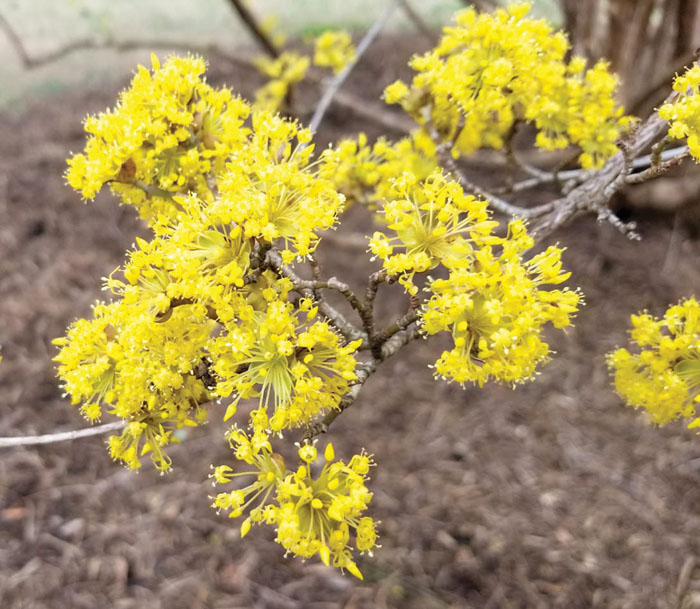With spring-like weather, what’s going on in the garden?
Published 12:00 am Friday, February 23, 2018

- Submitted photo This Cornus mas form of dogwood grows well in our area, but it may be hard to find.
February is generally the transition month when homeowners are pondering what to do about the upcoming spring. A few weeks ago, we were suffering frigid, below-average temperatures and this week we’re experiencing warm, spring-like weather.
Many are pondering the fate of early spring-flowering plants and scheduling upcoming maintenance chores. Below are a few questions I’ve received over the past few days.
Question: I’ve noticed this cascading shrub in full bloom in landscapes around Salisbury. It looks very much like a forsythia, but I don’t think that’s what it is. Can you tell me the name of this shrub?
Answer: The yellow blooming shrub in question is most likely winter jasmine (jasminum nudiflorum). It has green stems and blooms in late winter. The warmer weather has prompted the shrub and others to bloom a little earlier this spring. Forsythia will be blooming a little later. Go to https://plants.ces.ncsu.edu/plants/all/jasminum-nudiflorum/ for more detailed information about winter jasmine.
Question: Would now a good time to prune old my Old English boxwoods? The look rather bad because of the cold weather earlier this month.
Answer: Wait a few more weeks until mid-March. Most of the extremely cold weather should be over by mid-March, avoiding the likelihood of cold damage.
Question: I can’t believe it, but I’ve got wild onions and the chickweed is blooming in my lawn. Should I spray and kill them now?
Answer: Yes, both of these weeds are much easier to kill now in the early stages of growth. The wild onions are most likely wild garlic. Most weed killers formulated for lawns are a blend of pesticides containing 2,4-D and other broadleaf herbicides. Herbicide applications 10 days apart will usually give satisfactory control. Pre-measured hose-on applicators containing weed control herbicides work very well for small lawn infestations. Go to https://www.turffiles.ncsu.edu/weeds-in-turf/ for more detailed information.
Question: I was driving past Hurley Park in Salisbury earlier this week and there was this small tree completely covered in small yellow blooms. Could you tell me what kind of tree it may be?
Answer: The tree in full bloom in Hurley Park area is a Cornelian cherry dogwood (Cornus mas). It’s a very unusual, but beautiful small tree that also has flaking bark. It’s easy to transplant with no serious insect or disease problems, but you may have to search to find this tree. This dogwood adapts well to our area either as a large shrub or a small tree. Go to http://plants.ces.ncsu.edu/plants/all/cornus-mas/ for more detailed information.




